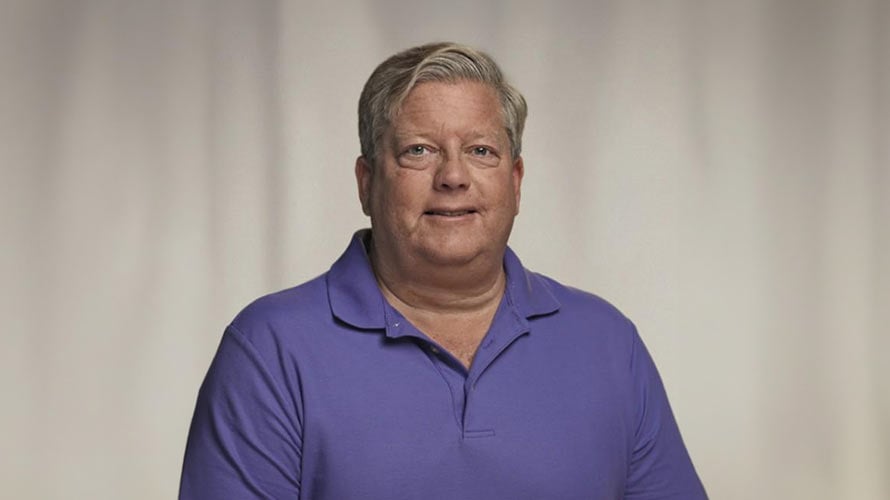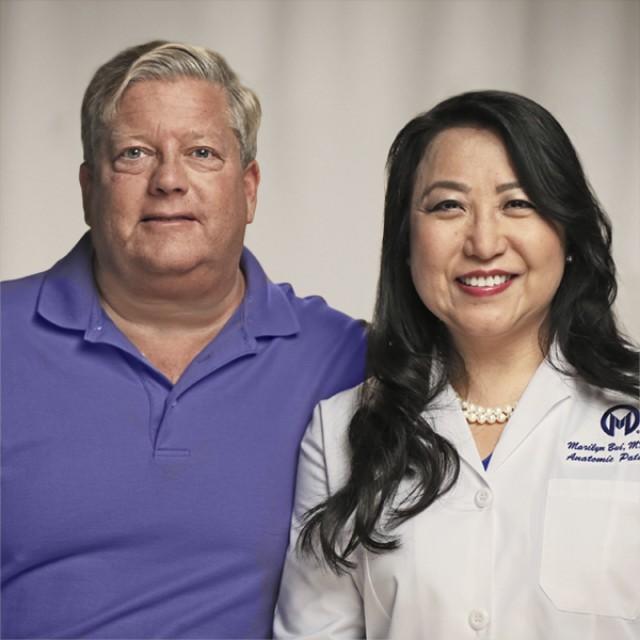Ray’s story with Dr. Bui

Meet Ray and Dr. Bui
Sarcoma Patient Marilyn Bui, MD, PhD, Moffitt Pathologist
"Through [Dr. Bui's] help, I was able to pull myself off the mat and start living again doing what I love."
To battle cancer once in your life can be a monumental physical and emotional test. Now imagine fighting it in three different parts of your body, over the span of several years.
Ray doesn’t have to imagine any of that. Because he’s been fighting multiple cancer challenges since 2011. It started when he noticed a large lump on his side, which turned out to be myxofibrosarcoma, a soft tissue tumor that can spread to other parts of the body.
Ray had surgery and radiation at Moffitt Cancer Center, but soon after noticed another lump in his right leg—another sarcoma. Following a second surgery and radiation, doctors found tumors in his left lung, leading to yet another surgery.
But he wasn’t done with cancer. A year later another tumor was found in his bronchial tubes, requiring another surgery. And then three more small tumors, requiring more surgery. And more radiation.
During his ordeal, Ray was near rock bottom. “I lost a lot of desire to do anything but just tried to exist,” he says. But Ray had two things in his corner: a talent for art and his pathologist, Dr. Marilyn Bui.
Ray asked Dr. Bui to show him his cancer cells under a microscope—“to stare the devils in the eyes,” as she describes it. To bring himself back from the depths, Ray wanted to turn his disease into artwork.
Using digital images of his own tumor cells, he began making art and sending it to Dr. Bui. “I was very impressed,” she says. So impressed, she had an idea. As a member of a professional society that publishes books on pathology, she proposed including his works in an art book.
Called “The Healing Art of Pathology,” the book contained poetry and art created by real cancer patients—with royalties donated to a foundation that helps patients who have no access to healthcare.
For Ray, the experience of doing what he loves and having his work seen by others led to a deeper understanding of his life. As he says in his chapter of the book, it became “a powerful testament to the beauty of hope.”

